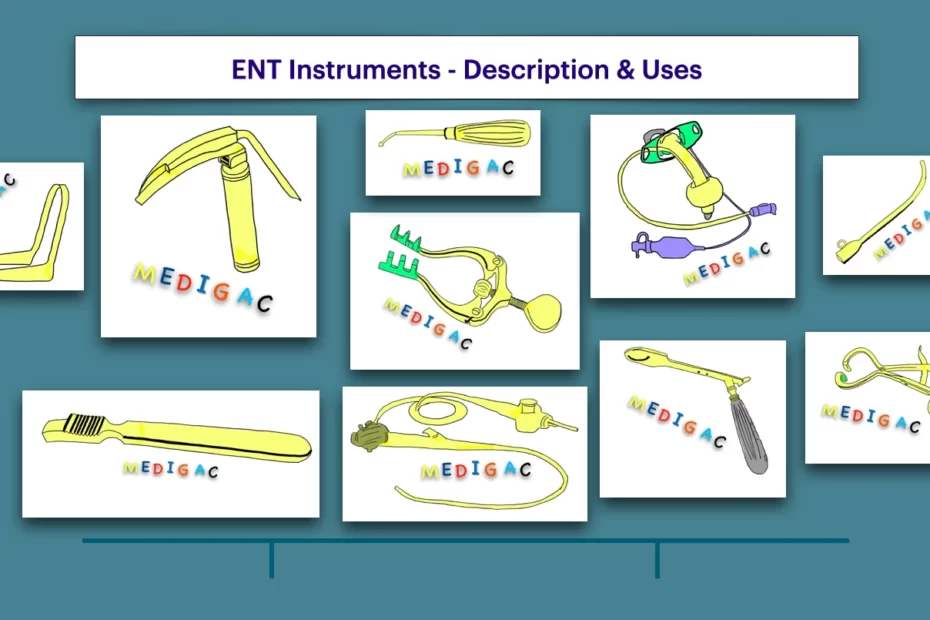We have made all the ENT(OTORHINOLARYNGOLOGY) Instruments full set or list with the Names, Description, Uses with Pictures. in you medical ward you will see all this instruments/equipments/devices. So full knowledge regarding all this devices is necessary for your medical and surgical practice and also during exams.
OTOSCOPE

Description :
This made of metal and plastic.
Has mainly tow parts : The Body/Handle & The Optic Head.
Uses :
1. Examination of the External ear cavity : In various diseases we need to check the external ear cavity properly.
Various conditions in which we use Otoscope :
- Serous Otitis media
- Acute otitis media
- Perforation of the tympanic membrane
- Ear wax
- Foreign body
- Otomycosis, etc.
MASTOID GAUGE

Description :
It is made up of stainless steel and has mainly two parts : metallic handle and the cutting end.
—-One end of the handle forms the curved rounded tips that has a smooth bevelling.
—–Hence it cuts the bones in a circular manner.
Uses :
1. Mastoidectomy : Used in mastoid surgery to remove bone.
JANSEN’S SELF RETAINING RETRACTOR

Description :
Full metallic body made up of stainless steel and has mainly three parts : Tips, Arms and a large screw.
—-The two arms connected with each other by the screw mechanism on its lower end. And pins are present on the tip of the arms which are 3 in no.
Uses :
—-The two arms connected with each other by the screw mechanism on its lower end. And pins are present on the tip of the arms which are 3 in no.
LEMPERT CURETTE

Description :
It has a round large handle which ends to form a small scoop.
Uses :
1. Curette Bone : used to curette chunk of bones during mastoid and ear canal surgeries like :
- Tympanoplasty
- Stapedotomy
- Mastoid Exploration
LEMPERT’S ENDAURAL RETRACTOR

Description :
Large size metallic instruments which has four parts : Limbs(1st and 2nd blades), Tips, Screw and a large sized Plate(3rd plate) which can be adjusted and it can retract tissues.
Uses :
1. Endaural Ear Surgeries
2. Two lateral blades : To retract the flaps after incision.
3. One Central Blade : It retracts the temporalis muscle
LEMPERT’S END AURAL SPECULUM
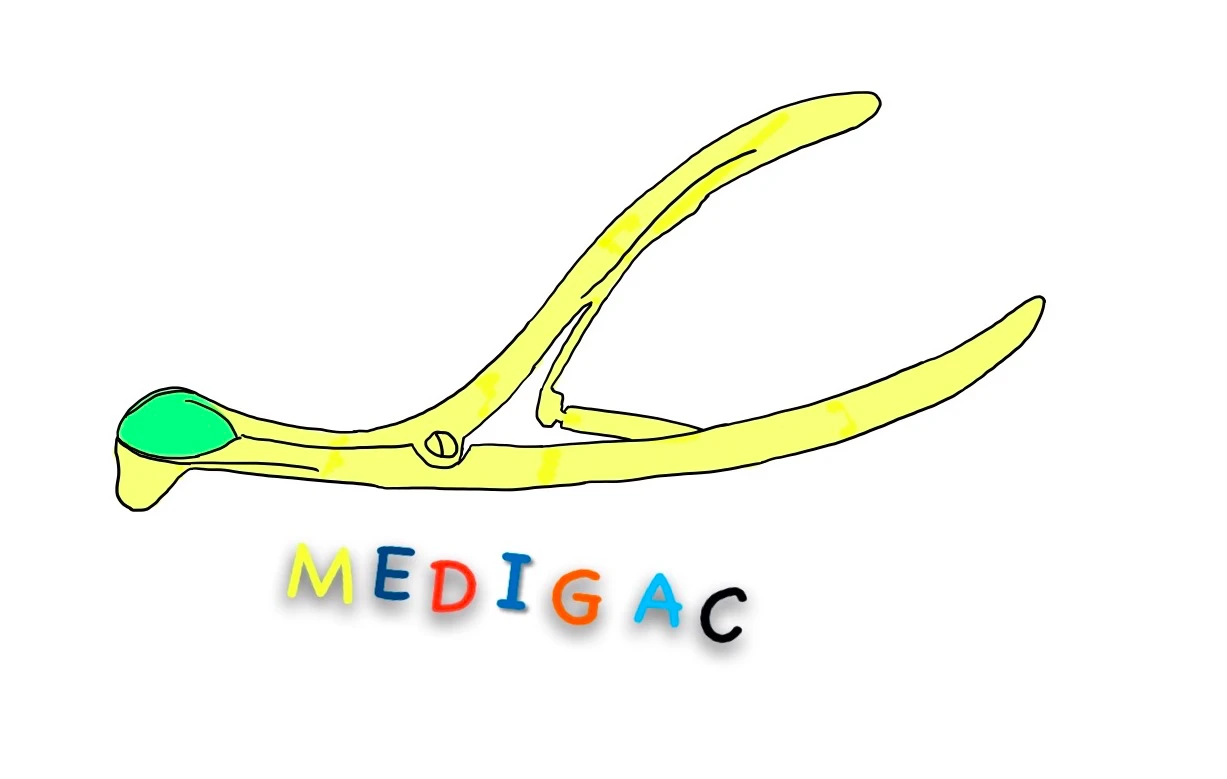
Description :
It has mainly three parts : Two limbs, Hollo cylindrical tip and a Screw.
—-The two limbs are attached with each other by the spring mechanism. And there is presence of a screw in one limbs to fix it in a specific position.
—-The upper end of the limbs forms curved plates by the both sides which ultimately results in a hollow cylindrical structure.
Uses :
1. Meatus Opening : It helps to wide the meatus during giving local injections or making an endaural incision.
FARABEUF’S PERIOSTEAL ELEVATOR

Description :
Made up of stainless steel and has mainly two parts : One handle, and the tip which is serrated and curved at the end.
Uses :
1. Mastoidectomy : It is used during elevation of periosteum from mastoid cortex.
MACEWEN’S CURETTE AND CELL SEEKER

Description :
Made up of stainless steel, a long structure.
–One end of the handle forms a spoon like curette which is used for removing diseases mastoid air cells.
–The other end is a probe which is used to check for cells.
Uses :
1. Mastoid Surgery : Used to explore the air cells with one end and to curette the intervening septa and granulations with the other.
MOLLISON MASTOID RETRACTOR

Description :
Metallic body and has mainly two parts : Limbs and Tip.
—There is presence of catch mechanism on the limbs.
—In both the tip has three pin like hooks are present.
Uses :
1. Mastoidectomy and Tympanoplasty
2. Harvesting temporalis fascia
3. In head and neck surgeries like Trachestomy
MYRINGOTOME

Description :
Metallic body and has mainly two parts : One handle and the triangular blade on the tip. There is a curve present in the neck.
Uses :
1. Myringotomy : To provide incision on tympanic membrane.
BRONCHOSCOPE

Description :
Made up of stainless steel and has mainly 8 components :
- Eye piece
- Diopter ring for focusing
- Control lever
- Working channel port
- Body
- Insertion cord
- Light source
- Suction valve and port
Uses :
In Bronchoscopy
CUFFED SUCTION AID TRACHEOSTOMY
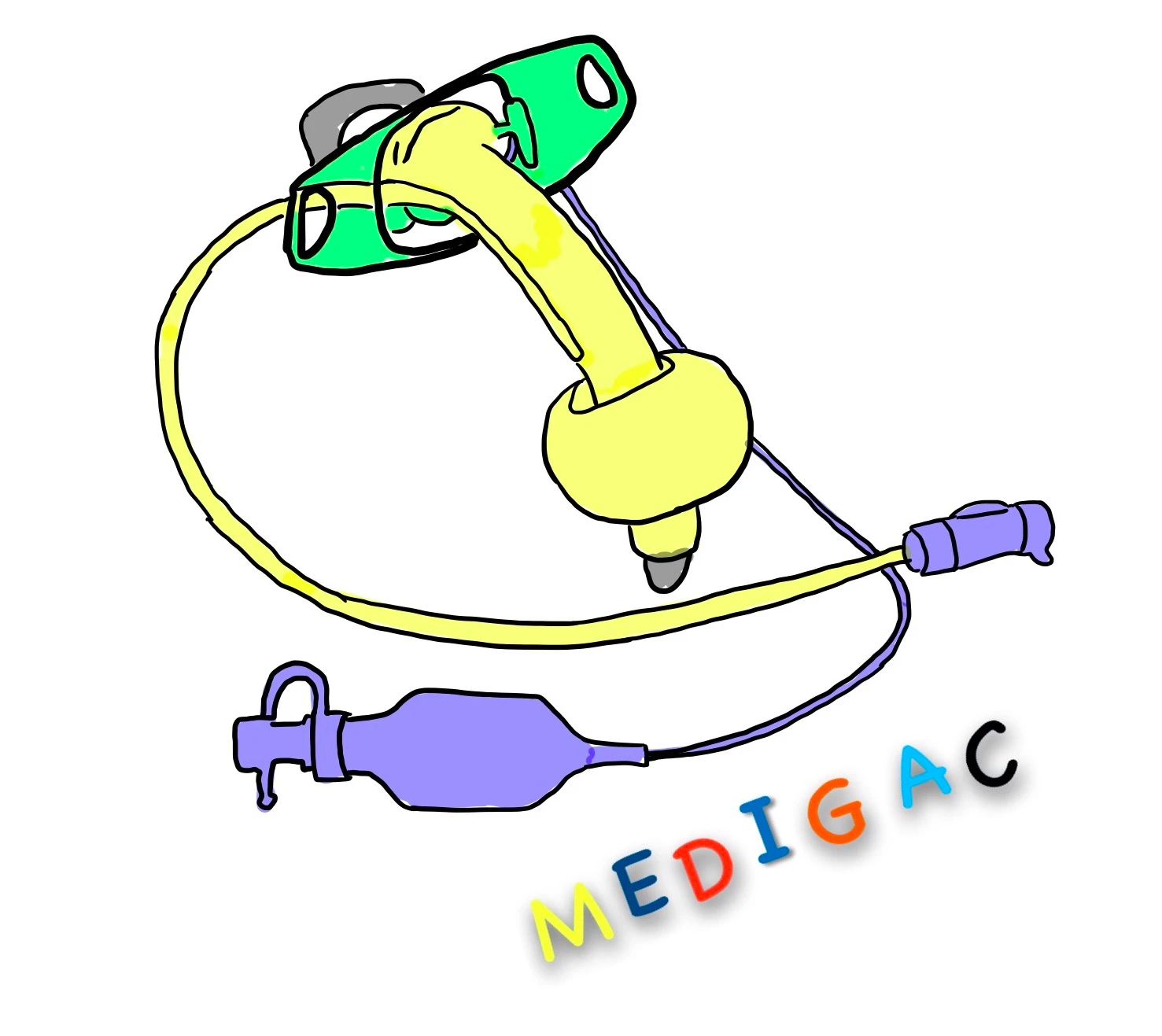
Description :
Made up of PVC construction. There are total 9 parts of this device :
- 15mm connector
- cuff inflation line
- pilot balloon
- 1-way valve
- Tape attachment
- Flange
- Shaft
- Cuff
- Distal tip
Uses :
1. Suction : Used to suck pharyngeal secretions collected above the cuff.
CUFFED TRACHEOSTOMY TUBE
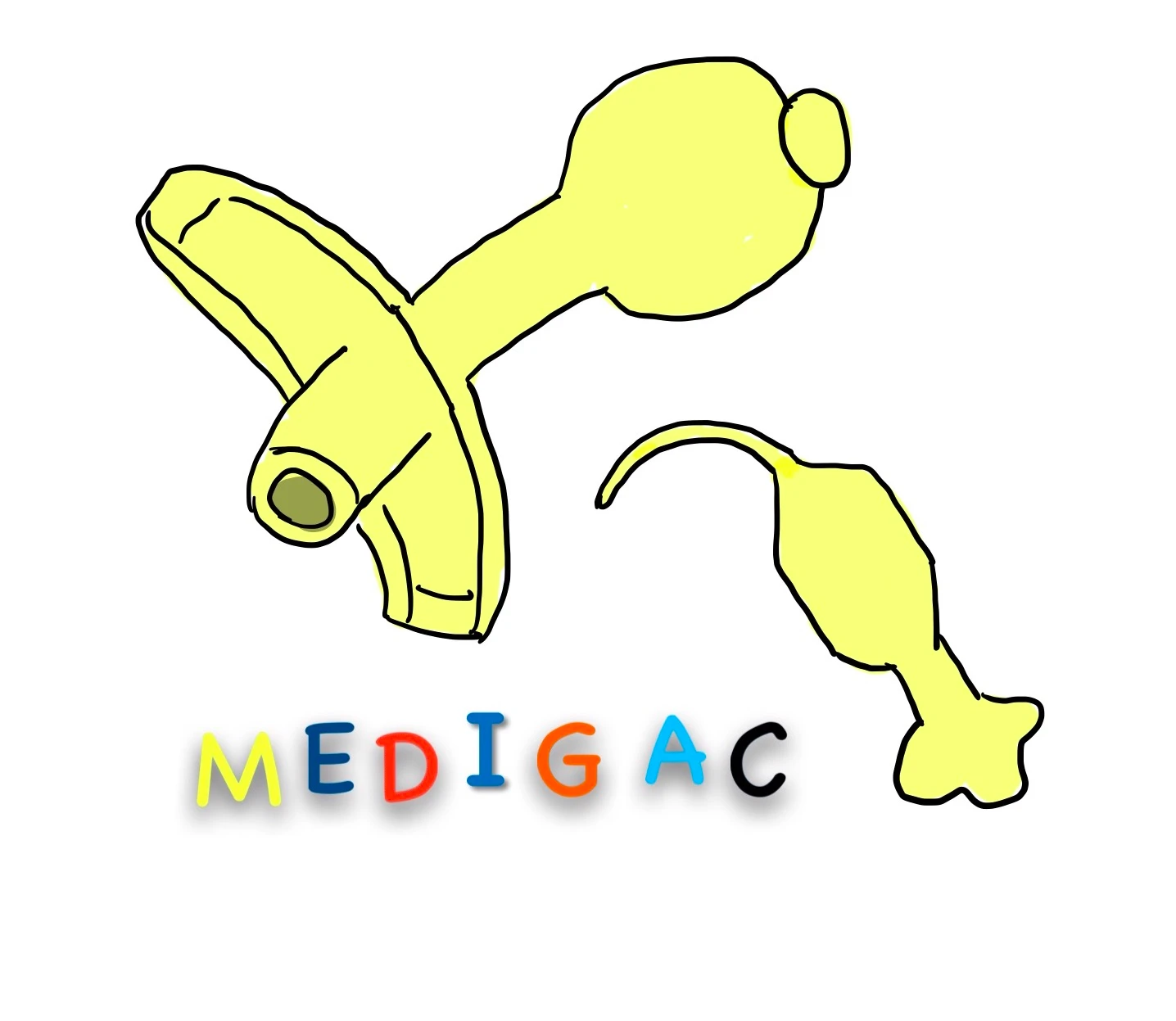
Description :
Made up of PVC materials. Total 5 parts are present in this device :
- Balloon cuff
- Inlation line
- Outer cannula
- Neck flange
- Cuff port
Uses :
1. Suction : Used to suck pharyngeal secretions collected above the cuff.
FULLER’S TRACHEOSTOMY TUBE
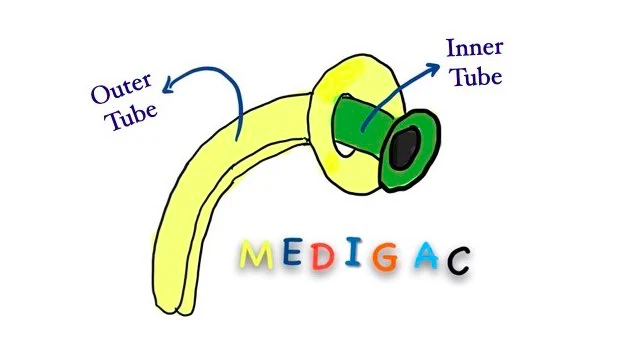
Description :
Made up of stainless steel and has mainly two parts : The outer tube and the inner tube.
Uses :
1. Bypassing Obstruction : If any obstruction occurs in th pharynx then we can put tracheostomy tube to bypass the obstruction.
2. Ventilation : Sometimes the tube can be connected to the oxygen tube and to the ventillator.
JACKSON’S TRACHEOSTOMY TUBE
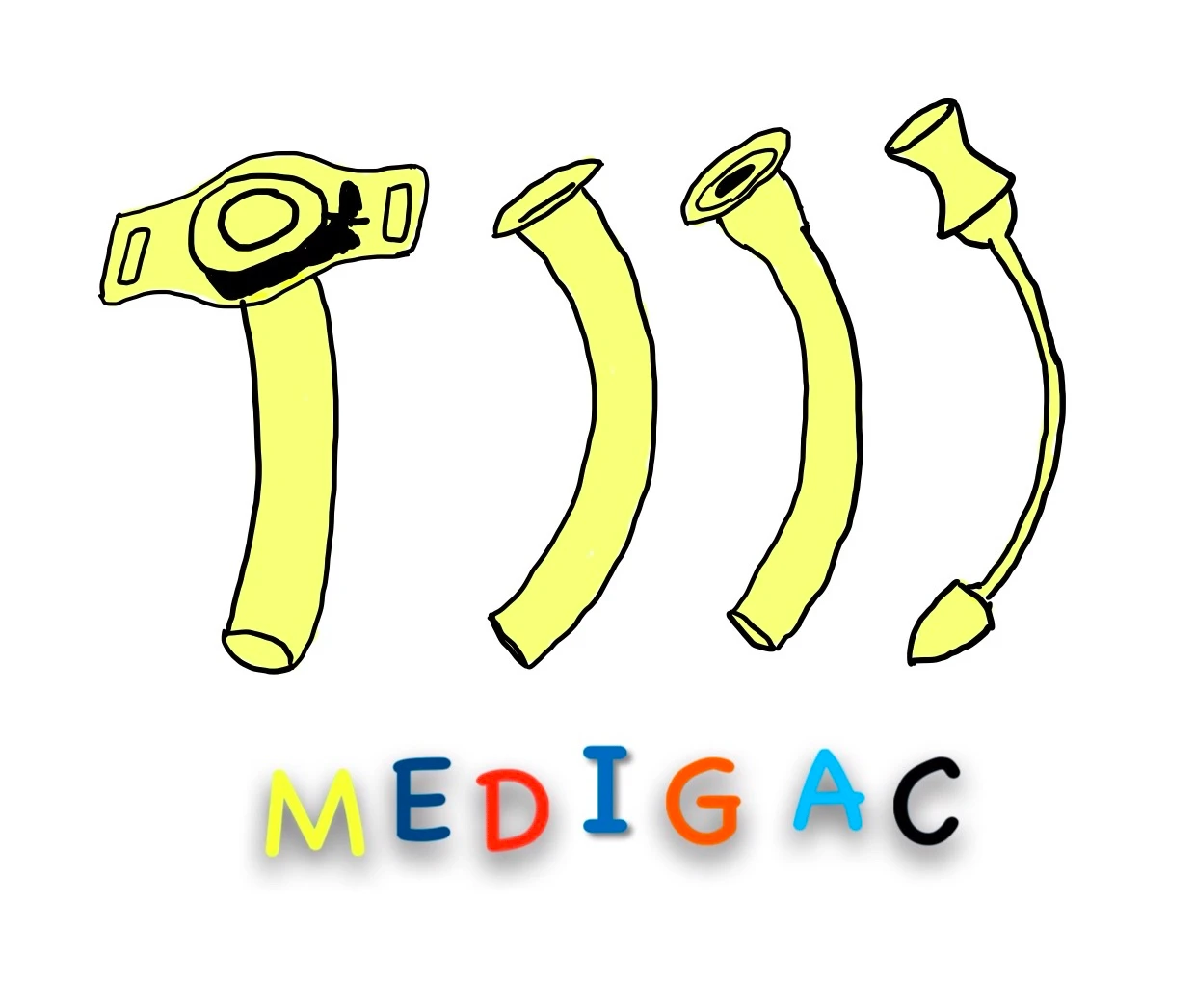
Description :
Made up of stainless steel and has mainly 3 parts :
- Outer Cannula
- Inner Cannula
- Obturator
Uses :
Emergency respiratory distress :
- Vocal cord palsy
- Neuromuscular disorder
- Respiratory insufficiency
LARYNGEAL MASK AIRWAY

Description :
It has mainly 6 components :
- Dome
- Airway Tube
- 15 mm connector
- Inflation line
- Pilot balloon
- Cuff
Uses :
1. Unnecessary endotracheal intubation : This device is the appropriate choice when endotracheal intubation is not necessary.
- Obstruction by gag
- Excess airway secretions
- Poor surgical view
- Laryngospasm
LARYNGOSCOPE

Description :
Full metallic body and has mainly 6 parts :
- Handle
- Hook-on-base
- Horizontal flange
- web/vertical step
- Beak/tip
- Tongue/Spatula
Uses :
Laryngoscopy : to view the inner structures, samples and to perform endoscopic surgeries.
OESOPHAGOSCOPE

Description :
Full metallic body and has mainly 5 parts :
- Handle
- Proximal end also called Eye
- Body or shaft
- Light carrier
- Distal opening
Uses :
1. Oesophagoscopy : to view the inner structures, samples and to perform endoscopic surgeries.
TRACHEAL DILATOR

Description :
Two arms of this dilator are attached by spring mechanism and the tips of both the arms forms curved blades.
Uses :
Tracheostomy : During tracheostomy operation after putting incision on the trachea, it helps t keep the tracheal edges open.
TRACHEAL HOOK
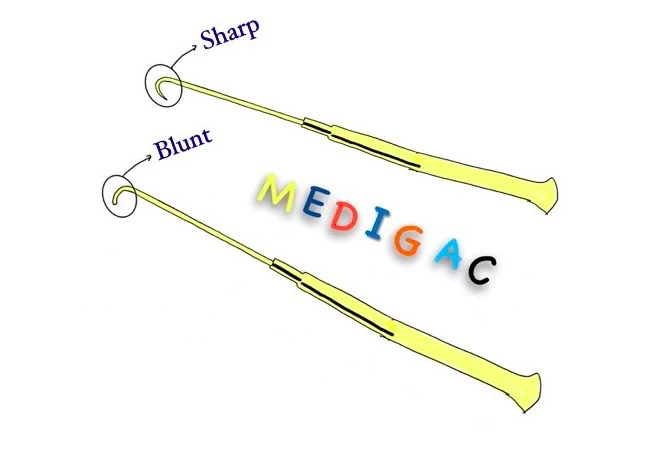
Description :
Long metallic handle and the tips are curved:
- Sharp
- Blunt
Uses :
1. Sharp Hook : To stabilize the trachea we put this to the lower border of cricoid cartilage.
2. Blunt Hook : Used to retract the thyroid isthmus to see the trachea.
ASCH’S SEPTUM FORCEPS
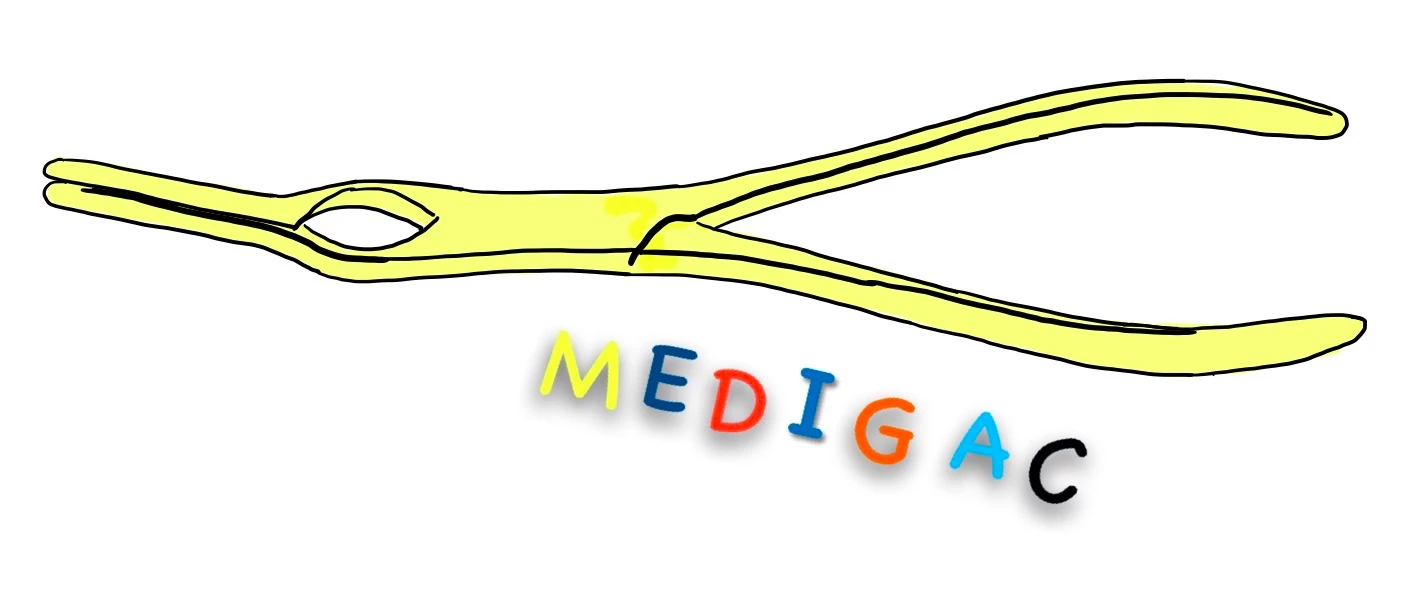
Description :
Made up of stainless steel and has mainly two parts :
—–Two limbs
—-And the Angled blades
Uses :
1. Nasal septum : Used to reduce the fracture and straighten the nasal septum.
BALLENGER SWIVEL KNIFE
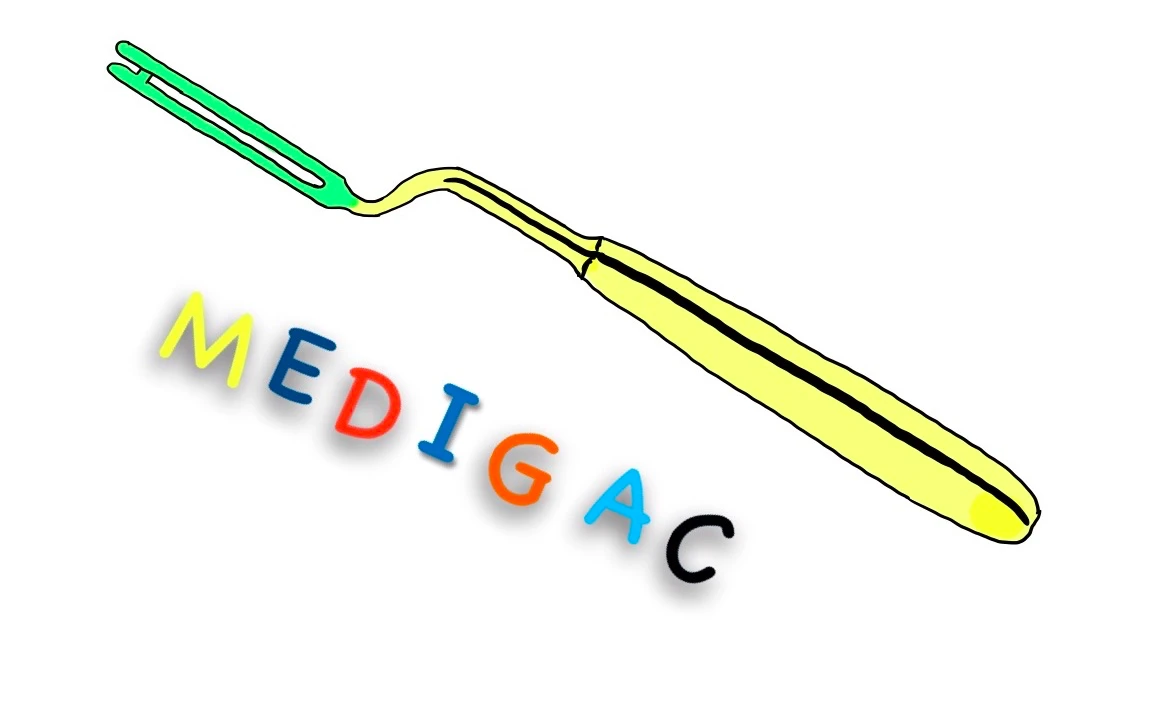
Description :
A handle and a blade at its tip.
Uses :
1. SMR operation : used to remove the septal cartilage
FREER’S DOUBLE ENDED ELEVATOR

Description :
Made up of two parts : One handle and the elevator at then two ends of the handle.
Uses :
1. SMR/Spetoplasty : To elevate the mucoperichondrium/periosteum.
HARTMANN’S DRESSING FORCEPS
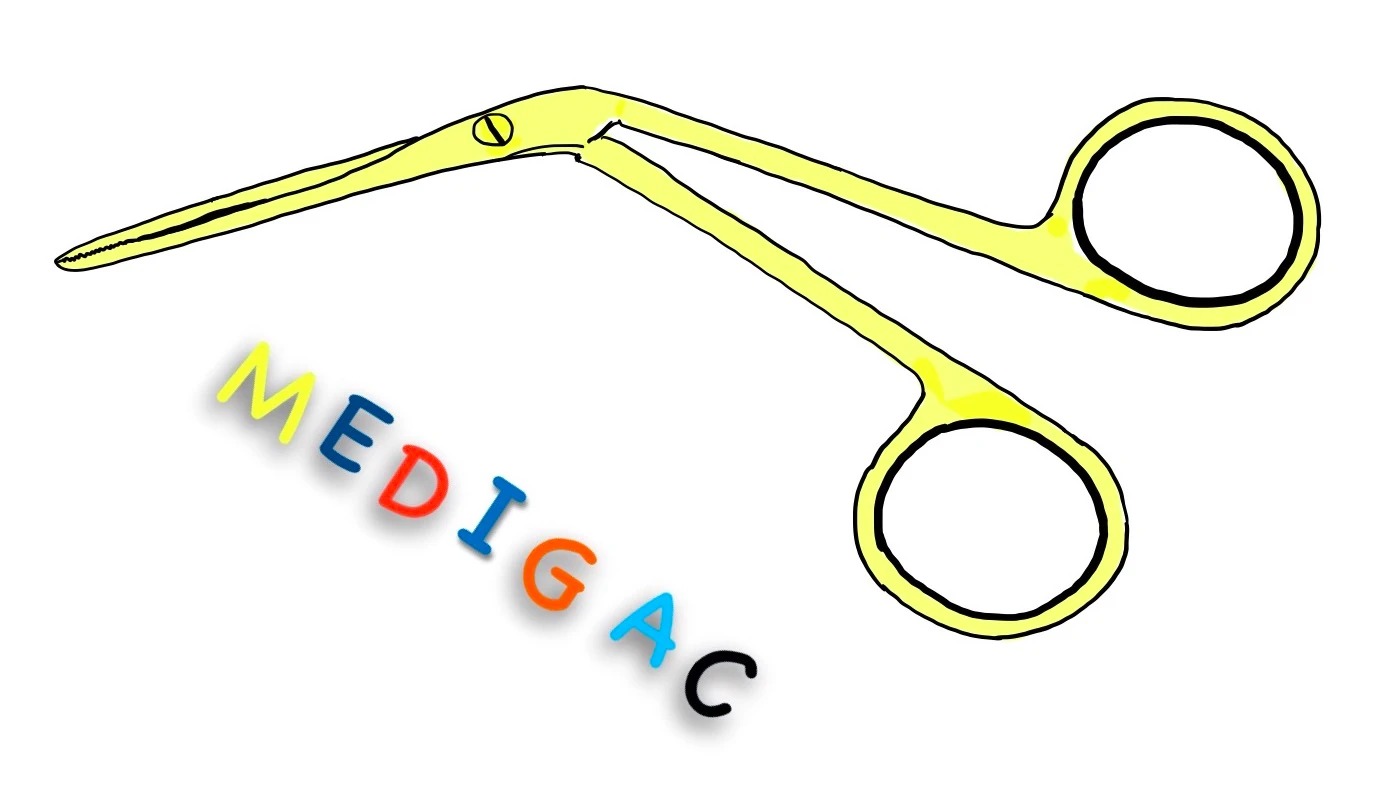
Description :
Made up of stainless steel and has screw joint at the middle to connect the two arms.
—-Grooves are present inside the tips along with a central depression.
Uses :
1. Removal of foreign body from nose
2. Dressing : Application and removal of dressings
KILLIAN’S LONG BLADED NASAL SPECULUM

Description :
Made up of stainless steel and has two arms which are connected by screw joint.
–Spring mechanism are present.
—Tips are long and semicircular structures which forms the speculum.
Uses :
1. SMR/Septoplasty : To keep away mucoperiosteal flaps during surgery.
KILIAN’S NASAL GAUGE

Description :
Metallic body with two parts : One metallic handle and the tip. The handle is attached with the tip with a single curved neck.
—-Some serrations are present on the handle.
Uses :
1. SMR Operation : Used to remove septal spur/bony crests.
LICHTWITZ TROCHAR AND CANNULA
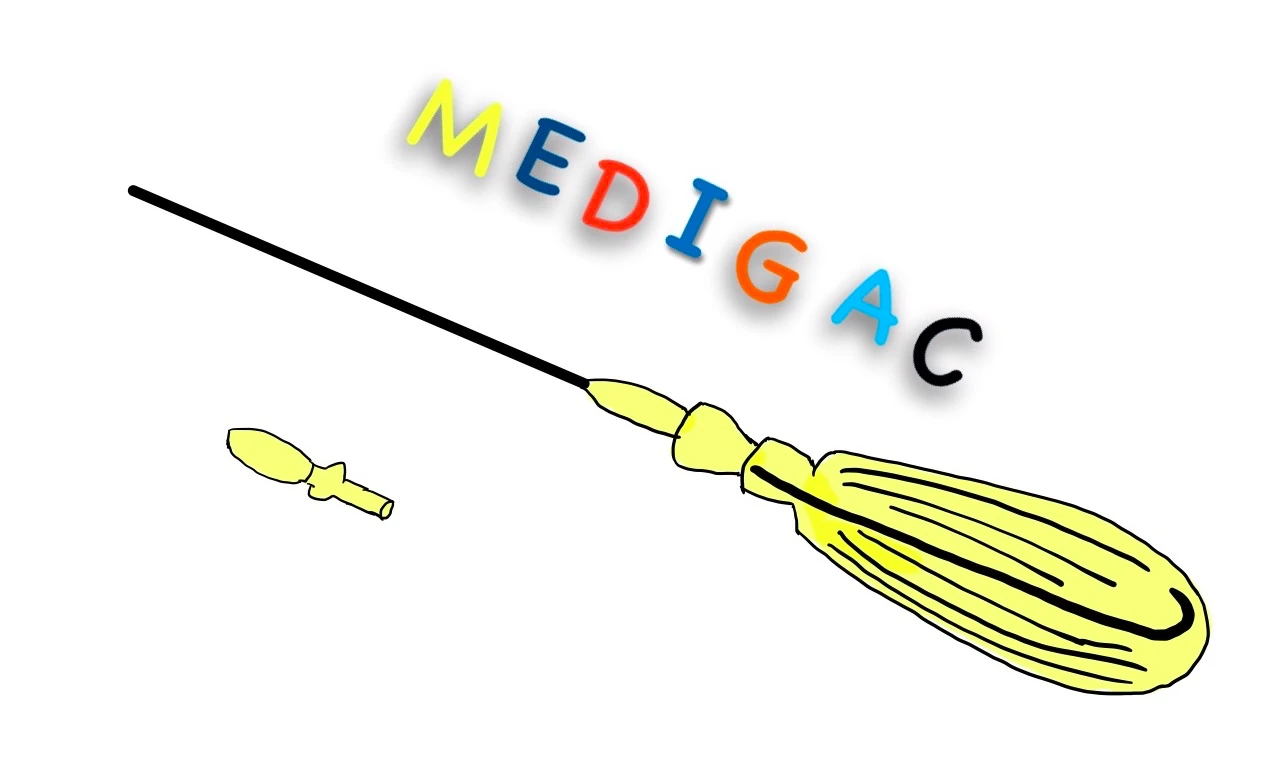
Description :
A thick handle in which the thin long trochar is attached.
—Another part is the cannula(not in the Diagram).
—And a small adapter to connect the cannula with the Higginson Syringe.
Uses :
1. Antral Lavage : We insert a cannula through inferior meatus, so by this device first we make a puncture.
